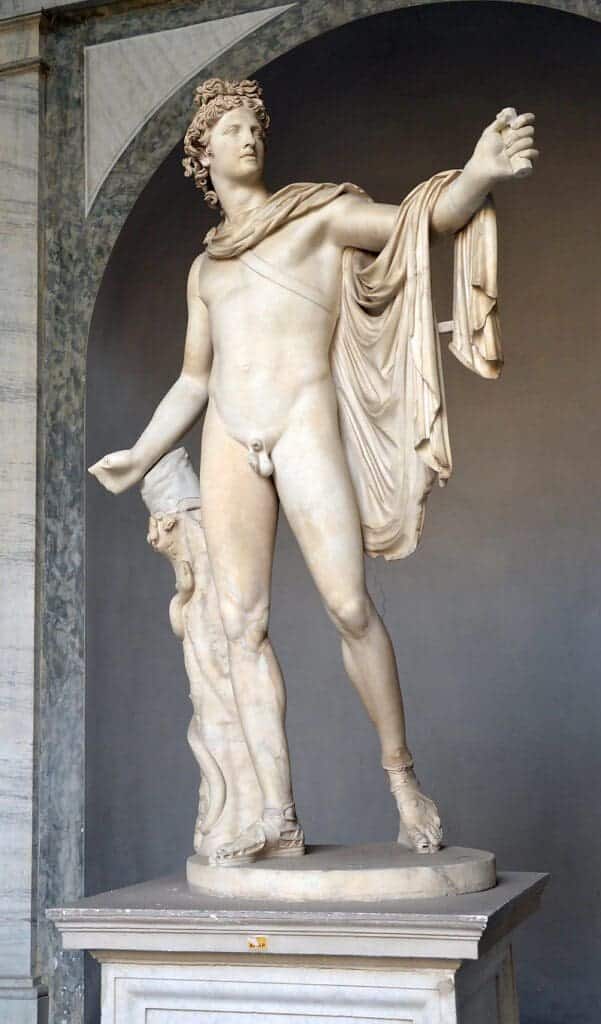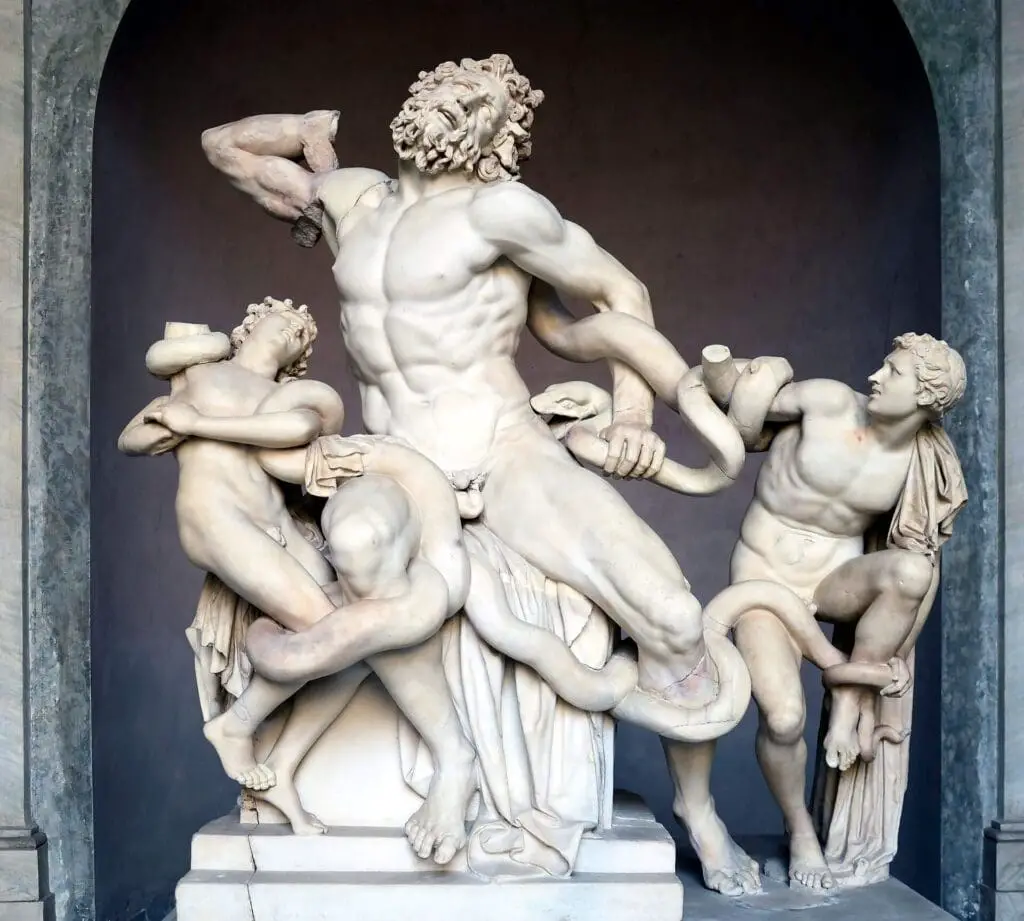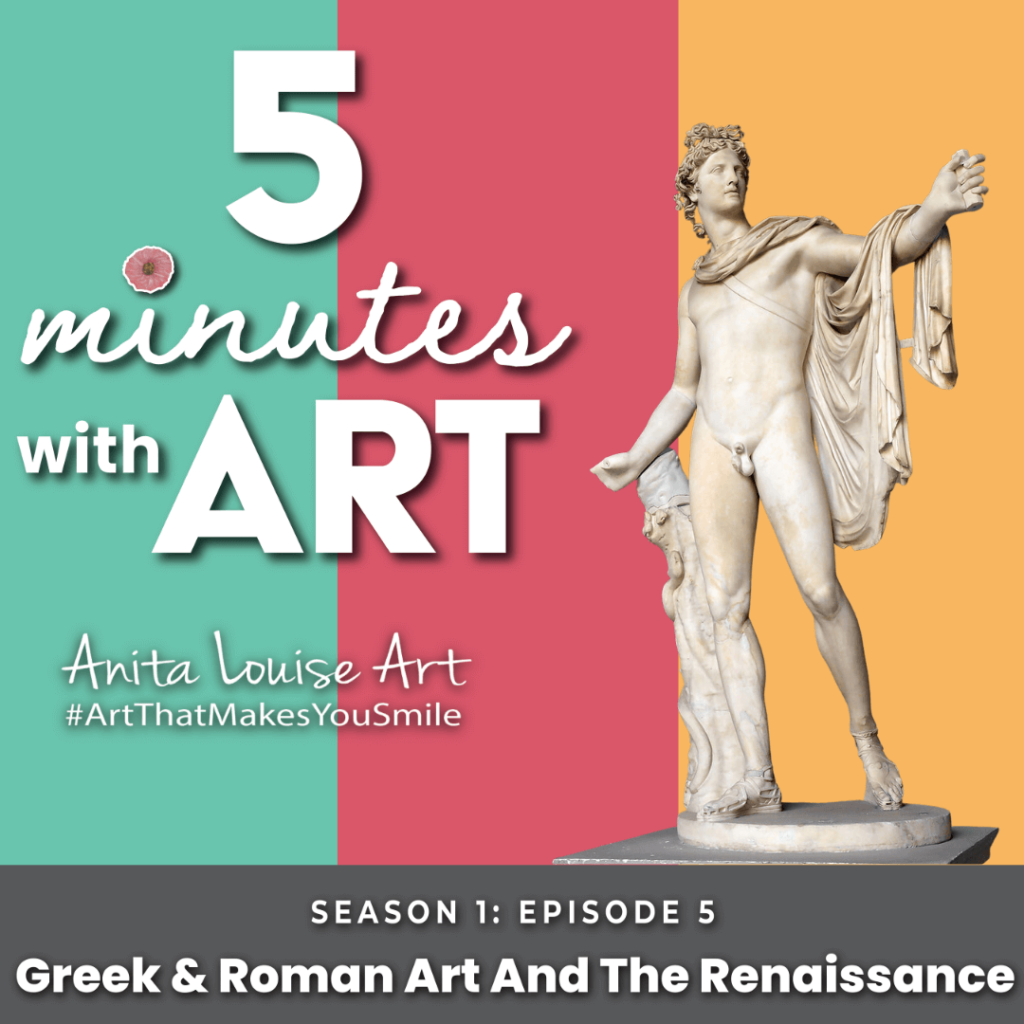Was Early Renaissance Art Based on Roman or Greek
Renaissance fine art is known equally the rebirth of art. Greek and Roman classical artworks influenced Renaissance art.
The Renaissance, a menstruum of rebirth, was profoundly influenced by the classical ancient arts of Greek and Rome. During this period, many Greek and Roman works of fine art were likewise rediscovered; this helped rediscovery of realism, symmetry, and harmony in the arts. Greek and Roman art also influenced the bailiwick matter of many of the Renaissance artists.
The Rebirth Of Greek And Roman Influences
The Renaissance menses was a time of rebirth; included in this rebirth was Greek and Roman Influences in the arts, including Greek and Roman architecture and sculptures.
These ancient works of art inspired many Renaissance artists. Suddenly, what had once been a lost ancient work was now existence discovered, and those discoveries helped show these artists things that were possible that they had never thought about earlier.
Pope Julius II was the Pontificate from 1503 to 1513. Pope Julius was very addicted of antiquities and purchased many classical works. Pope Julius 2 had the Belvedere Court congenital to display many newly found antiquities and classical statues.
The Dais Court, located in the Vatican Palace in Rome, is probably the first museum-like structure to house works of art, including many Greek and classical Roman statues.
The artist Michelangelo was also in dandy favor with the pope. This gave him an incredible amount of access to these Greek and classical Roman works, and it helped to inspire him and his works of art.
Even though other Renaissance artists did not have the same access, the artwork they saw Michelangelo produce also inspires them.
Significant Greek And Roman Works Of Art That Influenced The Renaissance
Several influential works were found during the renaissance period that profoundly affected the Renaissance artists. These works of art show the artists things they never idea were possible before, and so they then used this inspiration in their works of fine art.
Here are iii of the near of import Greek and Roman statues found in the Renaissance era and placed in the Belvedere Courtroom by the Popes.
Apollo Belvedere

The Apollo Belvedere is an excellent example of classical Greek arts and sculpture. The Apollo statue shows the all-time of nature, art, and humanity – all rolled into one figure.
The statue is a second-century copy of a Greek statuary original. It was hidden for a while only found in the late 15th century and acquired by the Vatican in 1511.
The Apollo is a perfect representation of the Greek and Classical Roman arts. You can meet how realistic this statue is with the intricate folds of Apollo'south wearable and the perfection of his male effigy and body.
Too, with Appollo's stance, you can see how one of the legs is aptitude and most like he is prepare to movement it anytime. This statue is seen equally one of the nearly perfect representations of the human figure.
What makes this a perfect representation of the classical mode is that Apollo is calm and peaceful. Apollo is not engaged in whatsoever action or emotion but is instead calmly posing.
The statue is considered a perfect representation of the classical fashion. Information technology also represented everything that the renaissance artists were trying to attain: the ideal homo class and the realistic details in a classical stance.
Laocoon

Laocoon is a Roman copy in marble of Greek mythology; this statue was made betwixt 42 and 20 BC. It is rumored to have been made past 3 great sculptors –Agesander,Athenodoros, and Polydorus.
The statue was found in 1506 near Nero'due south Golden House site. Nosotros are not certain if Nero or some other wealthy Roman owned it.
The unearthing of the statue was an essential issue in Rome in 1506.Michelangelo was in Rome at that fourth dimension to witness the unearthing of the statue.
Pope Julius II, a lover of antiquity, immediately acquired the statue. The metropolis historic with church bells being rung throughout Rome as the Laocoon statue was taken to the Vatican, where the statue still resides.
This statue had a profound event on Michelangelo and his work. Equally in favorite artist of the Vatican and Pope. Michelangelo spent a lot of time studying this Laocoon statue.
The statue portrays iii people -most notably the Priest Laocoon and his ii sons – who are all desperately struggling to stay alive. You can run across the expressions anf pain on their faces.
The statues showed muscular movement and power and not just strength. It too showed climax and emotion; this kind of climax and emotion in a work f fine art influenced Michelangelo and many other Renaissance artists.
Belvedere Trunk

Unlike the ceremony that surrounded the unearthing of the Laocoon statues, the Dais Torso was likewise unearthed in 1523, simply there was no anniversary surrounding its unearthing.
The statue Is a Roman copy of a Greek original, and information technology'south dated to be from the get-go century BC. Nosotros are not exactly certain who's Body it is, but many believe it was the Greek Gods Hercules or Apollo.
Even though the statue is only of a Trunk, Michelangelo admired it immensely. He frequently referred to the statue as his teacher and used copies of the pose throughout his future work, notably in the Sistine chapel.

The Renaissance Influences With Greek And Roman Art
During the Renaissance, artists began to capeesh the Greek and classical Roman ideals. These classical ethics included things such every bit realism, symmetry, and harmony.
When Rome was undergoing reconstruction during the Renaissance era, many important works of art were rediscovered. Areas of Rome that had once been desolated and ruined for over chiliad years saw people finding valuable statues – sometimes while plowing a field or expanding a foundation for a edifice.
These classical artistic findings gave the Renaissance artists massive inspiration and even imagination. With those important discoveries came a renewed interest in the Greek and Roman Classical forms and art.
The Renaissance besides showed that the arts could testify the physical perfection of both the body and spirit. The Renaissance artists tried to testify perfectionism in their works of art.
The Renassicace likewise showed how strong emotion could be office of the arts. Fine art subjects were painted to testify homo emotions.
There is no dubiety that the Renaissance era was a time that was greatly influenced by Greek and Rome Classical arts.
Anita Louise Fine art is dedicated to fine art education, great artists, and inspiring others to notice and create their art. We love art that uplifts and inspires.#ArtToMakeYouSmile! #ArtToMakeYouHappy!
If you are interested to meet any of my art, yous tin can find out more by clicking here. If you lot are interested in what inspires me and my paintings, you can discover more by clicking hither.
Why Was The Man Figure And then Of import To Renaissance Art?
The human effigy was pregnant to the Renaissance artists; they showed the realistic man form. They understood that to show the human being grade adequately, they needed to study it and empathize it better. The classical statues of Greek and Rome greatly influenced these Renaissance artists and their desire to depict the perfect human form. It can exist said the Renaissance artist started on their written report of the human figure where the Greek and Roman artists left off.
By clicking here, yous tin can learn more past reading Why Was The Human Effigy So Important To Renaissance Art?.
British Renaissance Artists And Art
The Renaissance in Britain, known as the English language Renaissance, took place from the early 16th century to the early 17th century. It took place later than the Italian Renaissance. Information technology was also a complicated renaissance movement, and paintings were non emphasized as much as music and literature. One of the famous artworks that did come out of this era was portrait miniatures.
By clicking here, y'all tin can acquire more by reading British Renaissance Artists And Fine art.
Source: https://anitalouiseart.com/greek-and-rome-influence-on-renaissance-art/
0 Response to "Was Early Renaissance Art Based on Roman or Greek"
Post a Comment